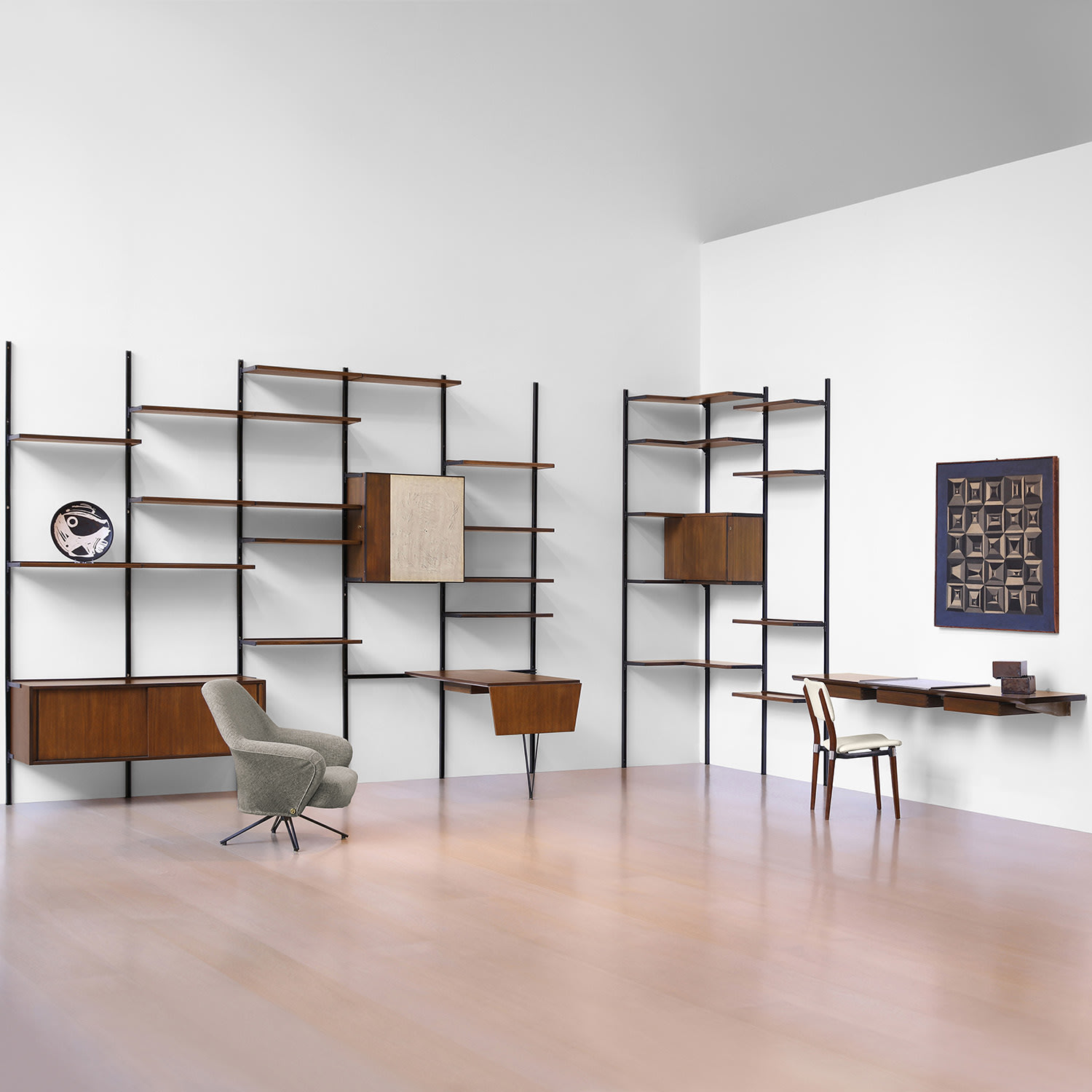

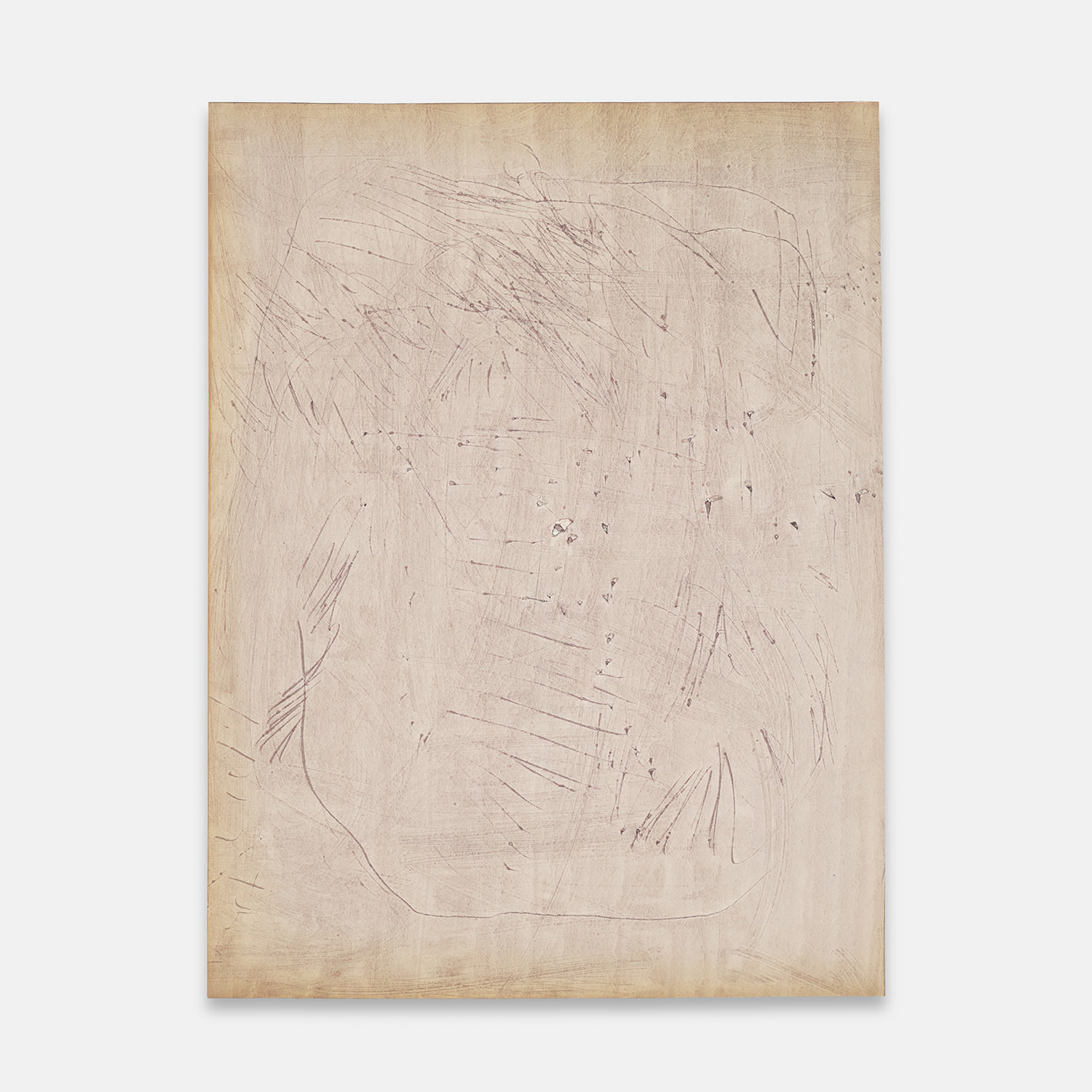

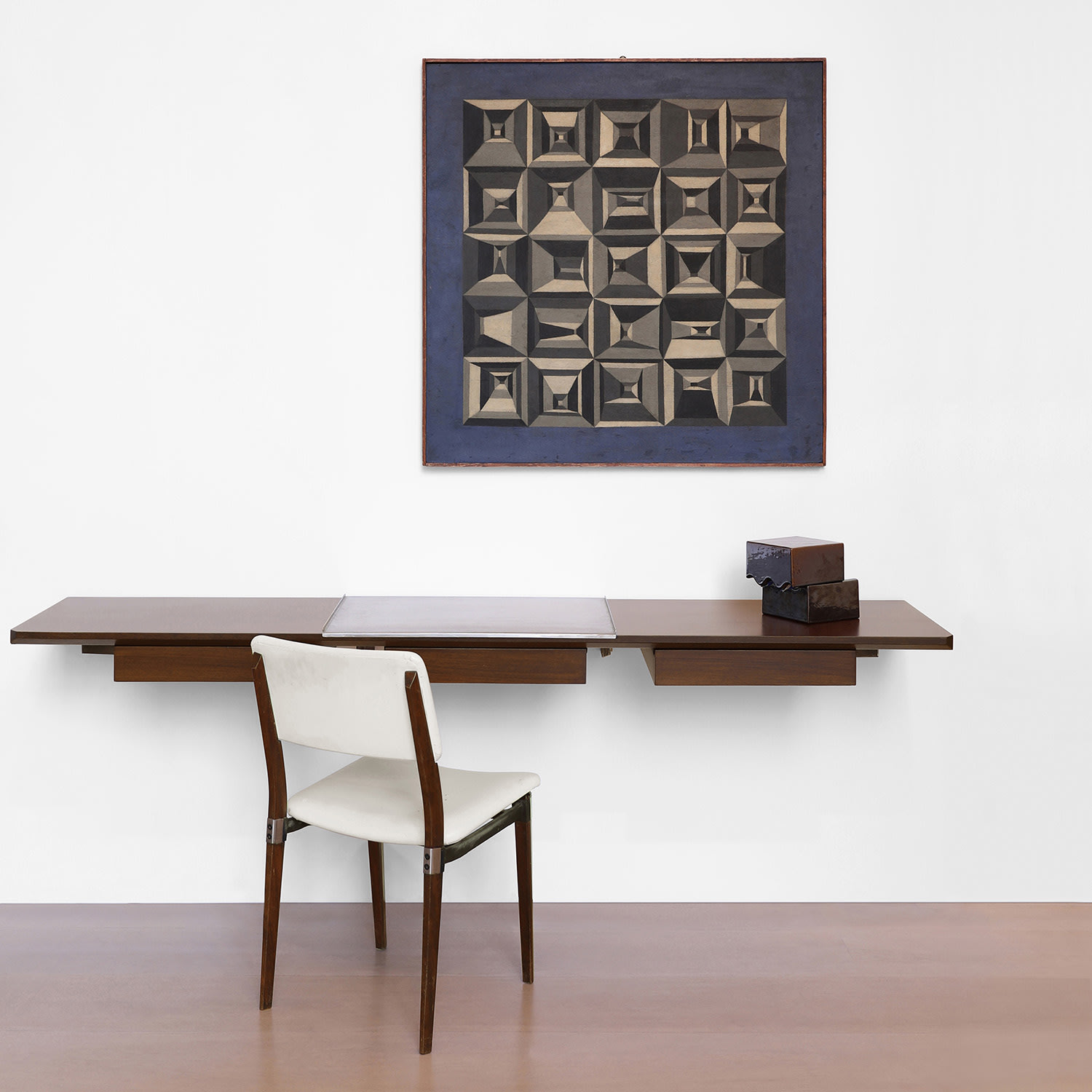
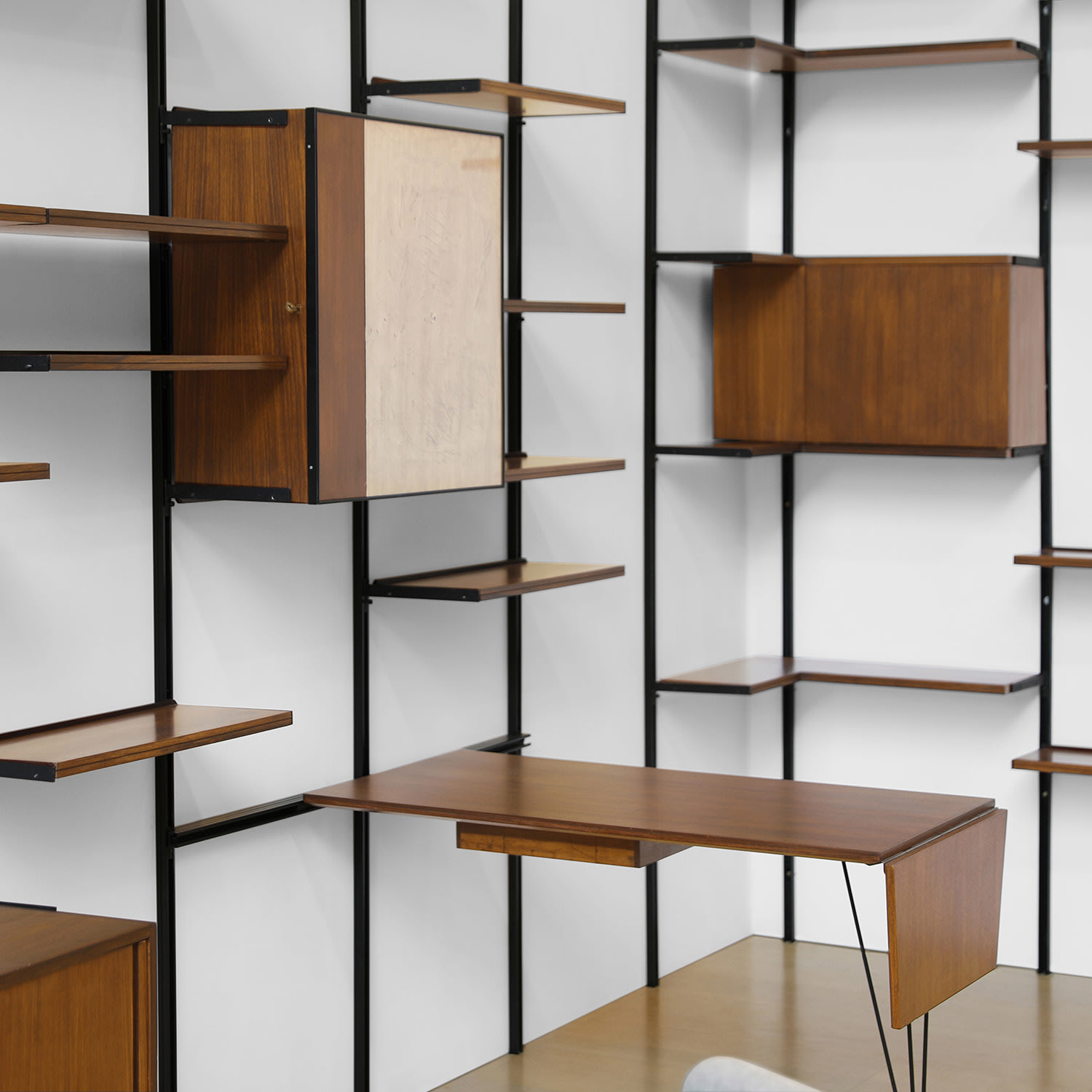
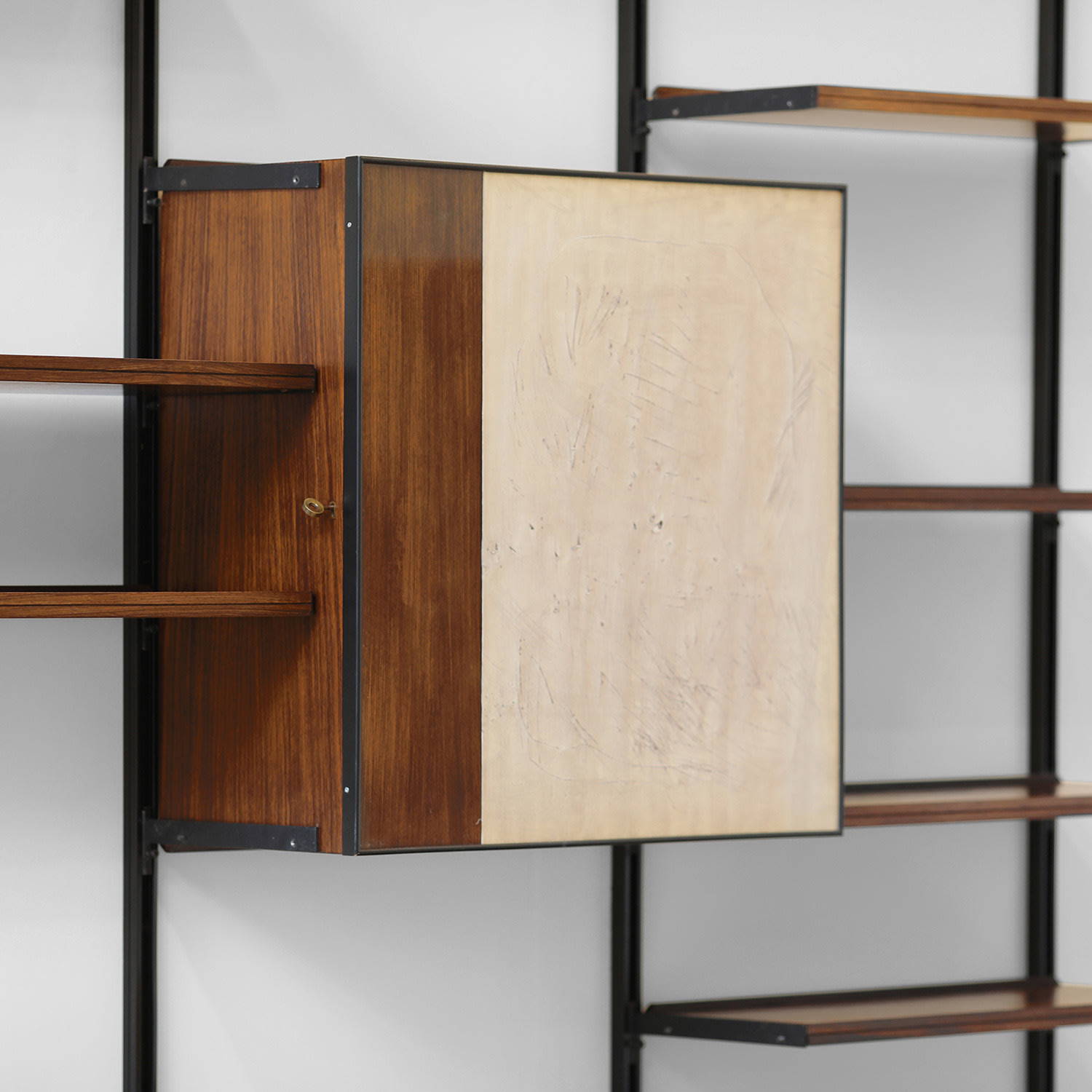


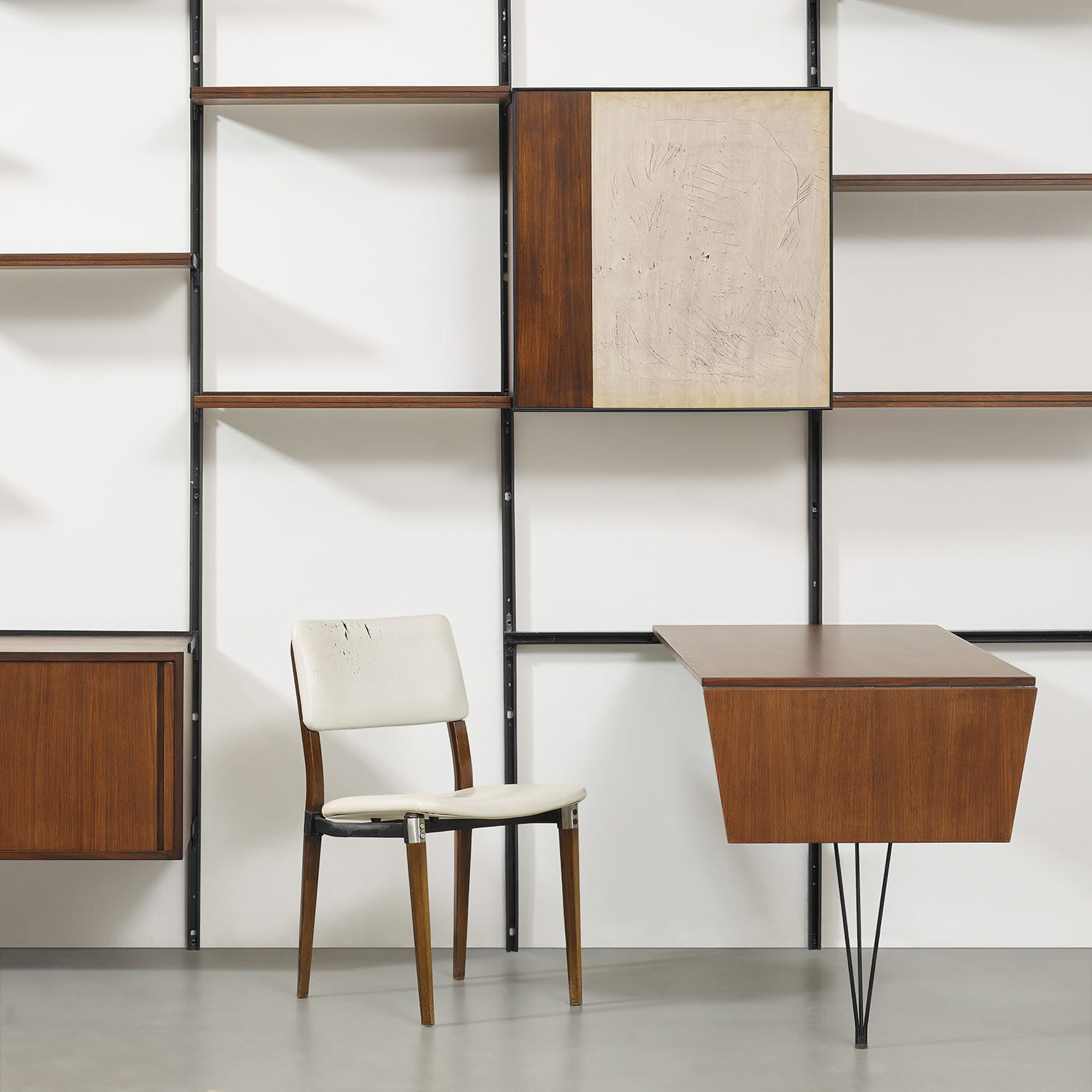
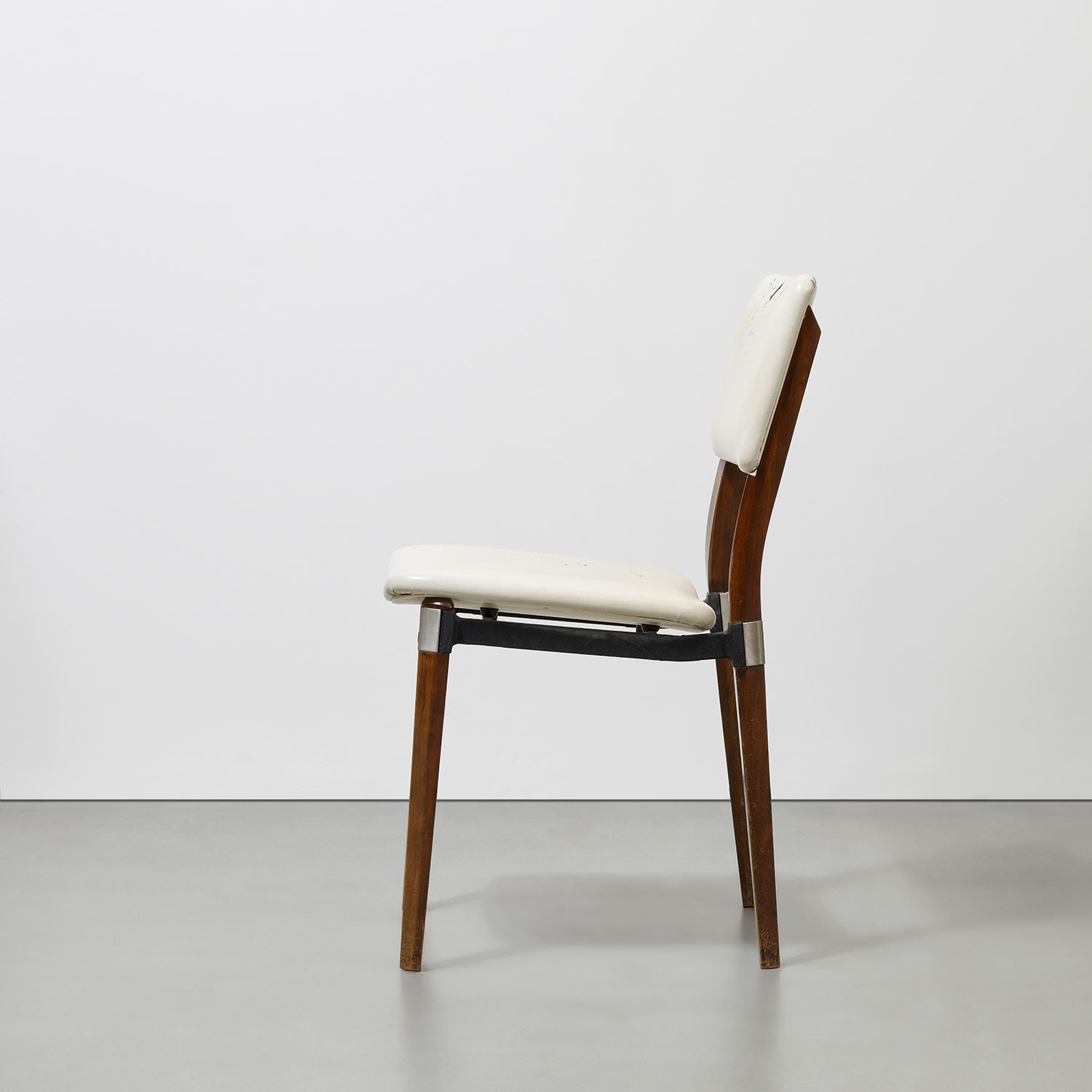

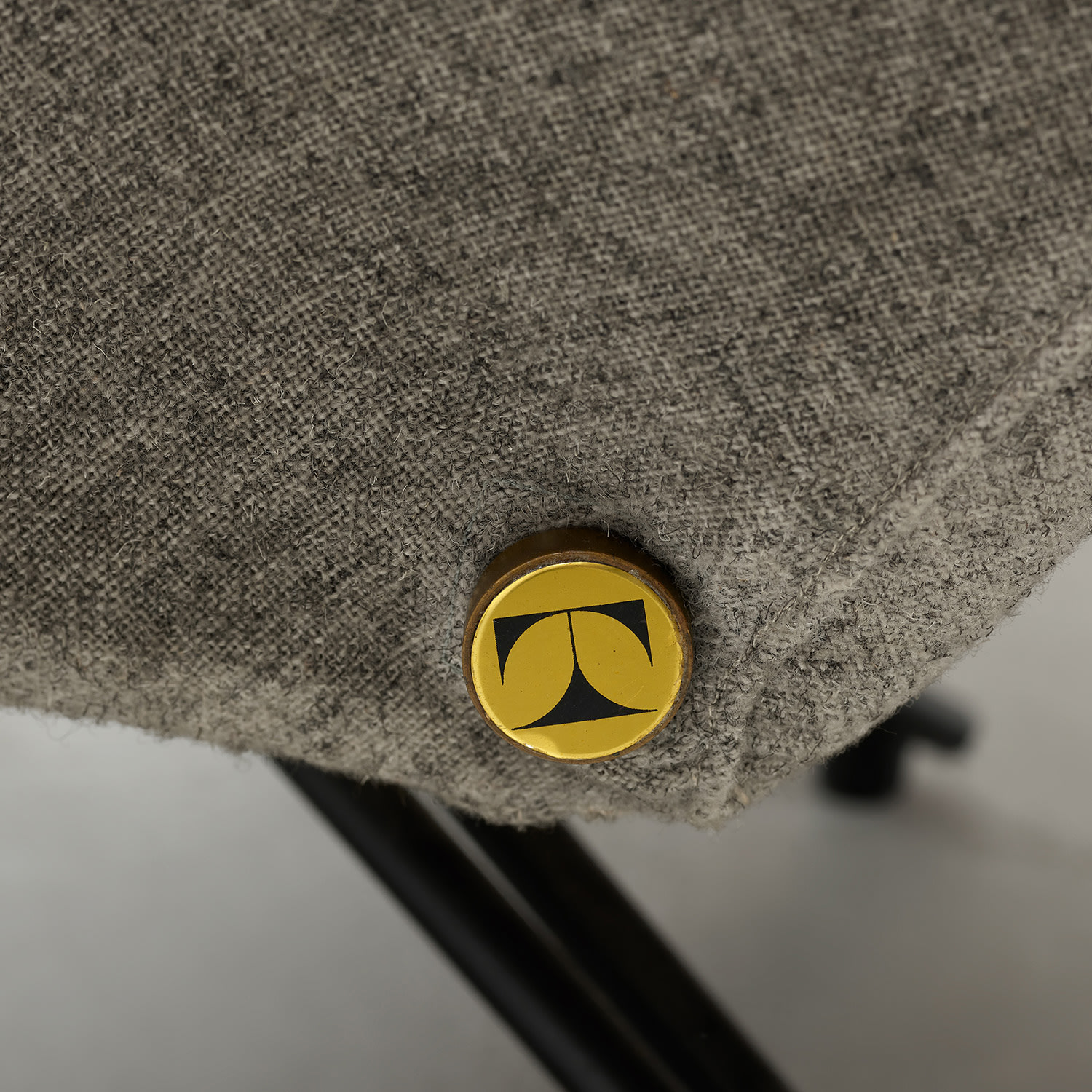













229Σ
Osvaldo Borsani and Lucio Fontana
Study with wall-mounted shelving system, model no. E22 and integrated ‘Concetto spaziale’, swivel armchair, model no. P32 and side chair, model no. S81
circa 1959
Brazilian rosewood, Brazilian rosewood-veneered wood, anodised aluminium, steel, painted steel, brass, vinyl, fabric, acrylic-covered metal.
Paper mounted on canvas.
Paper mounted on canvas.
Shelving unit with bar cabinet, additional cabinet and adjustable desk: 273.4 x 355 x 155.5 cm (107 5/8 x 139 3/4 x 61 1/4 in.) fully extended, as shown
Artwork: 69.5 x 52 cm (27 3/8 x 20 1/2 in.)
Shelving unit with cabinet: 273.4 x 69.7 x 154.7 cm (107 5/8 x 27 1/2 x 60 7/8 in.) as shown
As shown: 19 shelves, 5 corner shelves
Comprising 23 shelves, 5 corner shelves
Wall-mounted desk: 14.4 x 209.5 x 48.6 cm (5 5/8 x 82 1/2 x 19 1/8 in.)
Side chair: 80.1 x 40 x 52.9 cm (31 1/2 x 15 3/4 x 20 7/8 in.)
Armchair: 83.5 x 82.8 x 77 cm (32 7/8 x 32 5/8 x 30 3/8 in.)
Artwork: 69.5 x 52 cm (27 3/8 x 20 1/2 in.)
Shelving unit with cabinet: 273.4 x 69.7 x 154.7 cm (107 5/8 x 27 1/2 x 60 7/8 in.) as shown
As shown: 19 shelves, 5 corner shelves
Comprising 23 shelves, 5 corner shelves
Wall-mounted desk: 14.4 x 209.5 x 48.6 cm (5 5/8 x 82 1/2 x 19 1/8 in.)
Side chair: 80.1 x 40 x 52.9 cm (31 1/2 x 15 3/4 x 20 7/8 in.)
Armchair: 83.5 x 82.8 x 77 cm (32 7/8 x 32 5/8 x 30 3/8 in.)
Manufactured by Tecno, Varedo, Italy. Cabinet, armchair and chair incised with manufacturer's logo. Artwork signed L.FONTANA. Together with the original invoice from Arredamenti Borsani Varedo and a certificate of authenticity from the Fondazione Lucio Fontana, Milan, registered under the archive as no. 3905/1.